Chris Baty's Blog, page 260
July 14, 2011
Keeping Poetry Alive
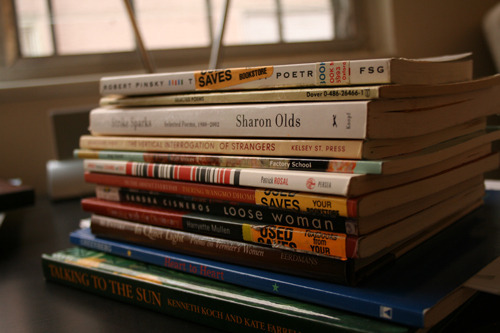
Max's recent post got me thinking about the reader's experience with poetry. It is often referred to as a dying, archaic art form, and although new collections of poetry are published frequently, I sometimes wonder who is buying and reading them besides poets themselves. Maybe it's simply the people I've polled in conversations, but I often find when I ask people if they read collections of poetry for pleasure, the answer is no.
When I was teaching, poetry was the form of writing that caused the highest level of anxiety in my students, besides the research essay. Creating art isn't solely about the reader, but I do think considering audience is an important factor in any piece of writing, especially with a form that is sometimes known for alienating readers. So, I'm always trying to think of ways to make poetry more public, accessible, and enjoyable for the reader.
Ekphrasis is one form I often use to attempt this. Connecting poems to well-known visual art that reader's may have had an experience with may make the poems more accessible. I also taught this form to elementary, middle, and high school students. It continually proved to be a fun way for them to jump into the realm of poetry without intimidation and allowed them to gain confidence in their creative work.
Right now I'm experimenting with documentary poetry. For me, this documentation process takes place by conducting interviews that speak to the subject I'm trying to write through. The tricky part is taking collected conversations and morphing them into something poetic. I'm not sure if I've made it yet, but I'm working on it because I wonder if this inclusion of voices will make the poems extend further.
Poetry readings are always a great way to make poetry public. Since sound and rhythm are inherent qualities of poetry, hearing it read aloud is not only enjoyable, but sometimes more authentic. (Although, I often wonder if the people who attend poetry readings are other poets.)
Social media can also be a useful took to make poetry more public. I know many poets have blogs to get their work out faster than the traditional publication process.
But there must be other avenues out there that are keeping poetry alive and using it to engage a more expansive readership, right? I'm not trying to knock poets for being interesting in their craft. It's great, if not essential, for those who write poetry to be involved as readers and listeners, but I would like to see more poetry books in the hands of people at coffee shops, libraries, and on public transportation.
What do you think? How can we keep poetry from the coffin?
Here's an Ekphrastic poem based on the mural below by The Community Rejuvenation Project
Lifegiver's Mural
onelove arrowed up
bird waits in
broken barred
cage
sings
through
black night
under yellow
slivered moon
round pale pink
orbs
float
No Killing
Anytime
claims
side
walk
by small
painted girl under city scape where
farmers toil in soil
produce
change
to see
bike fixing
Stop Killin'
three female faces
memorialized next
empty lot
link fence
look at
mother's firm caress under oak limbs
reach towards
daylight
leave shadows of
liquor store lights
behind
– Jenelle
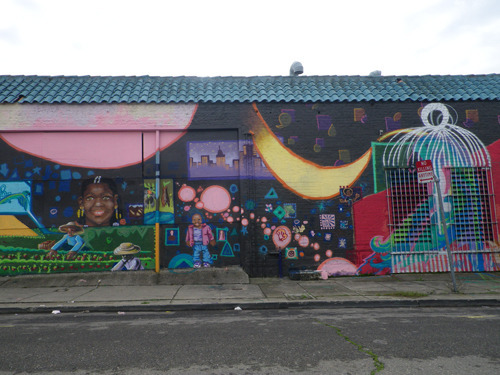
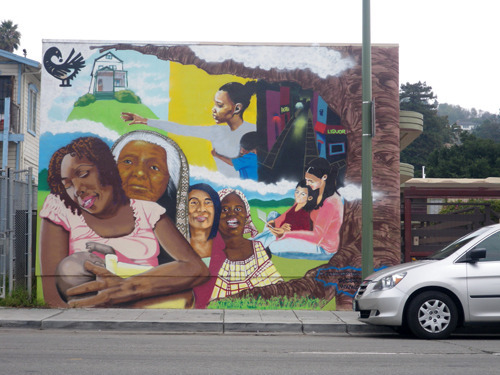
July 13, 2011
Ten Tips on Starting a Nonprofit
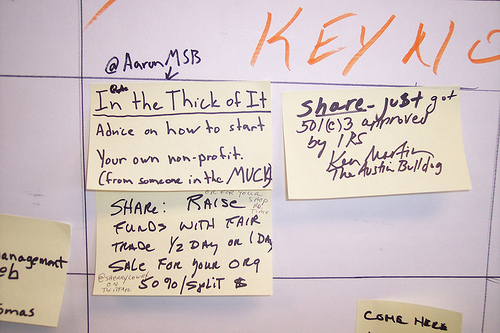
One of my friends is about to launch her own nonprofit. She and I are getting together next week so I can share some of my questionable insights about starting and growing an organization. I'm already deeply concerned that I'll lose track of time and spend our entire meeting walking her through various options for her office coffee grinder, so I wrote out ten things that I wanted to be sure to tell her. I thought it might be interesting to share them here, too.
If you've started an organization, what tips would you add to these? If you're just starting out, what questions would you like answered?
Ten Tips on Starting a Nonprofit
1: It's okay to not know what you're doing. Industries change from new ideas, and new ideas come from people who weren't taught how to do things the right way. It's okay to be an outsider.
2: When you first start out, hire a graphic designer to create a professional logo for your company or organization. Good graphic design will shape the way people see your organization and will open a surprising number of doors. It's magical, really, and it's more affordable than you think.
3: Even if you believe your organizational finances are simple enough to manage with a spreadsheet and a shoebox of receipts, make a point of entering all your income and expenses into accounting software like QuickBooks or Quicken. Do this from day one. This will feel like a hassle, but having a rock-solid financial foundation will be a godsend as you grow.
4: Seek out yodas. One of the most important things you can do for the success of your organization (and the maintenance of your own sanity) is to have an informal pool of experienced advisers who can tell you what to do when you come up against an issue that you don't quite know how to handle. These sage individuals will also be your conduit to much-needed professional resources like affordable HR consultants, great manufacturers, reliable accountants, and other people you'll need. To build your pool, find people who are doing what you want to be doing and see if you can take them out to coffee and ask them a few questions. Choose a coffee shop that is convenient to them, buy their coffee (even if they try to pay), and be sure to thank them profusely afterwards. Yodas will change your life!
5: If you can get away with it, being funny in your public communications (website copy, Twitter feed, etc.) will make people pay attention to you in a way they won't if you stick to a safe or predicable script. Slip tiny jokes into unexpected places. Surprise. Delight.
(6: I am feeling a lot of pressure now to offer something surprising and delightful.)
(7:)
8: When you make mistakes (and it's okay to make mistakes), own up to them. Go public with any goofs that impact your participants or customers. Do it quickly. Admitting mistakes builds a sense of trust between you and the world at large that lasts much longer than the annoyance your audience will feel at the fact that you messed something up.
9: No matter how much good you are doing in the world, you will get emails from people who go out of their way to be mean. Unflinching kindness in the face of hostility is the only way to run an organization. Learn what you can from all criticism and thank the criticizer for their feedback. Always take the high road.
10: Go long. The long game is the best game—having time to grow your organization over several years is a blessing. Take it slow, but be consistent. Put up the party tent year after year, and eventually the world will come to dance.
– Chris B.
Photo by Flickr user gregoryfoster.
July 12, 2011
Evoking Life Through Art and Writing
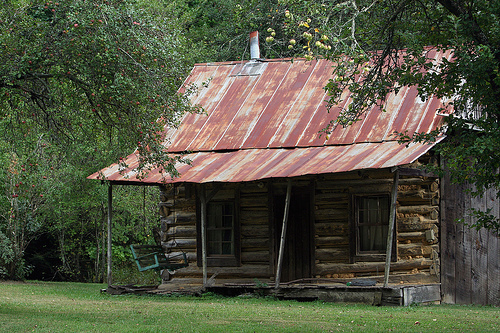
Yesterday, I visited an exhibit at the Oakland Museum of California, a fabulous local gem that happens to be located right down the street from my house and practically in the front yard of my writing partner (and OLL board member) Elizabeth.
The OMCA website describes the exhibit thusly:
Spanning the 40-year career of the internationally renowned Southern California-based mixed-media artist, the exhibition features large-scale multisensory installations, assemblages, sculptures, paintings, drawings, and films that invite viewers into a made-up world, a skill for which McMillen is best known. Part sculptor, installation artist, printmaker, and cultural anthropologist, McMillen has been creating environmental installations with architectural references that deal with themes of time, change, and illusion since the 1970s. Opening in stages, with large-scale installations Lighthouse and Pavilion of Rain (a constructed habitat featuring rain pouring down on a shack of corrugated metal surrounded by a 30-foot pool of water) currently on view, the exhibition features work from OMCA's holdings as well as select loans from private collections.
But nothing could have prepared me for the actual experience.
Elizabeth and I entered this particular exhibit through a delightfully creaky screen door. A ramp carried us over an expanse of water to a small shack of wood, corrugated metal, and plexiglass. Inside, we sat on a bench under gossamer-thin curtains in half-darkness, listening to an utterly convincing soundtrack of bullfrogs, punctuated by the occasional bark of a dog or bird call. There was a light outside of the house that evoked a streetlamp, and it filtered through the slats of the shutters sent up reflections from the water onto the wall.
Growing up, my family had a little three-room log cabin in Cherry Log, Georgia, a tiny mountain town outside of Ellijay. The cabin was situated in a valley between a small man-made pond in front and Fighting Town Creek at its back. On those brilliantly starry nights, lying in the bottom bunk of my sister's and my shared bed, I fell asleep to the bullfrogs calling from the pond and the constant rushing of water from the creek. But nothing was better than when it rained. The cabin had a tin roof, which made the pounding water sound louder and closer, and made my bed feel warmer and cozier.
Sitting in this similarly simple structure on a stretch of water, in a darkened room deep in a museum across the country from North Georgia, I was further transported when it started to "rain." Carefully placed pipes above the structure released water over the roof and around its perimeter simulated a very real—and for me, very moving—approximation of a rain storm. In those few minutes we sat there, my childhood self emerged and I was once again wrapped in an old quilt, rain drumming down around me, watching the pattern of water on the window reflected on the rough wall. A small, satisfying world illuminated by porch light.
This magical tear in the space-time continuum grew in those moments, recalling the clap of our screen door slamming, the damp wood smell of the cabin, my dad's homemade peach ice cream, my dog Biscuit asleep at my feet.
And then the rain stopped, and the peepers came out, and I opened my eyes.
We went from the museum exhibit to write, as we always do on Sunday afternoons. I am (still) working on a nonfiction project about my stint as a professional dog walker. And I felt an all-new and very specific pressure to make my writing as apt, as transporting, and even remotely as moving for another as Michael McMillan's art was for me. And it reminded me in the best possible way of why I write, and why I specifically love to write nonfiction.
I used to think that writing should make the unfamiliar, the unknown, or never-before-seen feel real and familiar. But in writing nonfiction, I strive to share something I know or have felt with someone in a way that takes the everyday, the familiar, and recasts it in a way that makes it new and immediate. That takes them to a time or place or moment in their lives where they know exactly what I mean.
Why do you write? Have you ever experienced a piece of art that served as a time machine or a transporter?
– Lindsey
Picture by Flickr user anoldent
July 11, 2011
Giant Cat on a Rampage, but She Means Well!
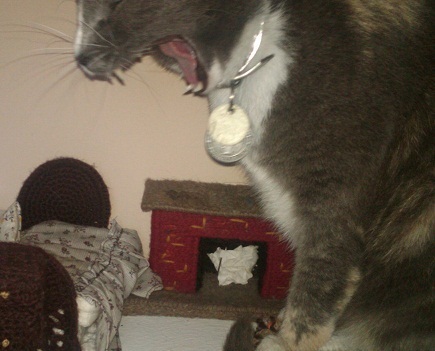
This just in: Giant cat on a rampage! The human whose bedroom this was had been about to light a fire in the hearth when a giant gray cat slunk in meowing: Firrrrre Bad! The human is long gone, a hairball of the future, but the monster cat remains unsatisfied, snarling, and ready to bite more than the hand that feeds her! Run for your life! Wait, cats love that! Lie very, very still! Wait, no, they love that, too… um… pet thoughtfully behind the ears and offer compliments, quick!
Or: this is Smokey Peavine Hassman, in her usual spot in my writing cubby. She likes to sleep on the doll furniture that was my Grandma's last gift to me (don't grandmas rock?!). I thought I'd get a pic of her in her usual cozy swirl position but just as I went to take it she sat up and yawned. The end result: a terrifying creature of Mothra-proportion devouring humans! (Mothra is my favorite of Godzilla's frenemies.)
This post is about more than cute/terrifying cats though. It's about how much we love cute/terrifying cats and about how that love is great for our writing. Seriously! Think of all they teach us. Smokey and Pekoe tear apart smaller creatures for sport on at least a weekly basis, they destroy my things constantly, and have their own understanding of what time I should awake. They are the villains in the story of my life, and yet I love them, feed them, and do not require that they find work. They are my darlings despite their monstrous traits because I have taken the time to understand their motivations. If I were an actor in a furry play, I could play either of them with depth and win a furry Tony award.
This understanding is exactly what we need in our writing—not for our protagonists (we've usually got that covered), but for the bad guys. Just as actors must, it's important to have empathy for the monsters in our stories so that we can write them believably and fully. Thank you, Smokey, for ruining Grandma's beautiful furniture in order to teach us all this lesson—another lesson in the long list we're creating (aren't we?) of the writing wisdom of cats.
I'd love to hear how your current story's antagonist is doing! Are you finding a blackened heart inside there that yet beats enough to give the character real shape? Do you find yourself surprisingly understanding of your villain's motivation for her horrific deeds? And how are your cats or other creatures in your care (including children and romantic partners) helping your story along? Finally, who is your favorite of Godzilla's frenemies?
– Tupelo
P.S. Choosing a winner for the Name My Letterpress Contest has proven to be alarmingly difficult. The judges are querulous and brawling over every entry, from Stamps McGee to Elvis Pressley. I'm going to let them continue to duke it out and in the interest of time and fairness, the letterpress will be named…
The Doctor Johannes Sebastian Stampy Atwick Leticia Larry Honey Herbie Hannah Stamps-McGee Kelsey-Grammer Elvis-Pressley Preston Fontaine III
If you had a hand in naming the press, you have my eternal gratitude! Please send the winning name you contributed and your address via this lovely form, and an amateur letterpress sample will be coming to you soon!
Gluten-Free Writer Fuel

At the end of last week I found myself dreaming of brownies, cookies, and cupcakes. Since I was about to sit down to start my poem for the day, giving into a quick sugar fix made sense. Finding a little treat isn't always easy, though, because I can't eat gluten. When I first moved to Oakland I started my search for the best gluten-free bakeries and restaurants, but it took a while before I found my go-to gluten-free spots.
In Boston I lived close to Zing Pizza. They have a delicious Blue October pizza, complete with butternut squash, goat cheese, spinach, caramelized onions, and a crunchy rice-based crust. "Crunchy" is the key word in that sentence. On my road trip to California last summer, I got to try a gluten-free sausage pizza in Chicago. The "crust" was actually a giant sausage patty. Again "crunchy" is a key word when it comes to gluten-free pizza! I savored my days in Colorado because there were a plethora of gluten-free options, including my favorite, Udi's Cafe. You can actually order a bagel or sandwich that tastes normal!
Good gluten-free options can be hard to come by, so I'm sure you can imagine how excited I was when I stumbled upon Good Chemistry Bakery located just a few blocks from my apartment. They make the most delicious lemon bars and chocolate chip scones I've ever had (including the gluten-filled ones). So last week I knew exactly where to go. That lemon bar not only helped my stomach but my poem too. Maybe that means I should eat one every day for the rest of the month?
Any other gluten-free folks out there? What goodies are getting you through your poem a day?
– Jenelle
July 8, 2011
In Defense of the Screenplay

My last screenwriting professor observed, with typical unhelpfulness, that screenplays are the only written documents that nobody reads for pleasure, on account of how boring and fundamentally artless they necessarily are. He was probably referring to the "blueprint" nature of the screenplay. That is, while novels, poems and essays are finished pieces of art, the screenplay is only a code that will hopefully lead to passable art somewhere down the line.
Beauty, as they say, is in the eye of the beholder, and there's simply no reason to think of a screenplay as essentially ugly or banal. It's worse than untrue—it's downright unproductive. The fact that not a lot of people are reading screenplays before bed certainly doesn't mean that screenplays aren't without their own rich aesthetic potential, and if you aren't trying to make your screenplay beautiful and sharp and exciting and easy to read… Well, why aren't you?
A screenplay's aims aren't (or shouldn't be) far away from a novel's, after all. In the broadest sense, we consider novels successful when they are strongly evocative; you know what the world of a good book feels like, looks like, etc. But a screenplay is supposed to evoke even more vividly its own internal reality in the mind of the reader, because that reader may eventually spend copious amounts of time and money trying to reify the evocation on celluloid. It's an insane thing to attempt, but that's another story.
I think if we want to write well in any medium, we have to be conscious of the reader's experience. How easy is the work to read? How clear? How evocative? How exciting? How memorable? And we have to realize that all these things are results, and that it's worth theorizing about how different syntaxes and word-choices affect them. We all know that exciting screenplays are good and boring ones are bad, but how do we get to the exciting screenplay?
Frankly, it's hard to look at a page in screenplay format and not think of a poem, or, going further in the same direction, a painting. My point is only that screenwriting is beautiful, and that it's not so much like assembling a car engine as some teachers would have you believe.
Are you conscious of the reader's experience when you write a screenplay?
– Max
Photo by Flickr user Matt-Richards
In Defense Of the Screenplay

My last screenwriting professor observed, with typical unhelpfulness, that screenplays are the only written documents that nobody reads for pleasure, on account of how boring and fundamentally artless they necessarily are. He was probably referring to the "blueprint" nature of the screenplay. That is, while novels, poems and essays are finished pieces of art, the screenplay is only a code that will hopefully lead to passable art somewhere down the line.
Beauty, as they say, is in the eye of the beholder, and there's simply no reason to think of a screenplay as essentially ugly or banal. It's worse than untrue—it's downright unproductive. The fact that not a lot of people are reading screenplays before bed certainly doesn't mean that screenplays aren't without their own rich aesthetic potential, and if you aren't trying to make your screenplay beautiful and sharp and exciting and easy to read… Well, why aren't you?
A screenplay's aims aren't (or shouldn't be) far away from a novel's, after all. In the broadest sense, we consider novels successful when they are strongly evocative; you know what the world of a good book feels like, looks like, etc. But a screenplay is supposed to evoke even more vividly its own internal reality in the mind of the reader, because that reader may eventually spend copious amounts of time and money trying to reify the evocation on celluloid. It's an insane thing to attempt, but that's another story.
I think if we want to write well in any medium, we have to be conscious of the reader's experience. How easy is the work to read? How clear? How evocative? How exciting? How memorable? And we have to realize that all these things are results, and that it's worth theorizing about how different syntaxes and word-choices affect them. We all know that exciting screenplays are good and boring ones are bad, but how to we get to the exciting screenplay?
Frankly, it's hard to look at a page in screenplay format and not think of a poem, or, going further in the same direction, a painting. My point is only that screenwriting is beautiful, and that it's not so much like assembling a car engine as some teachers would have you believe.
Are you conscious of the reader's experience when you write a screenplay?
– Max
Photo by Flickr user Matt-Richards
July 7, 2011
No Fairy Godmother Required
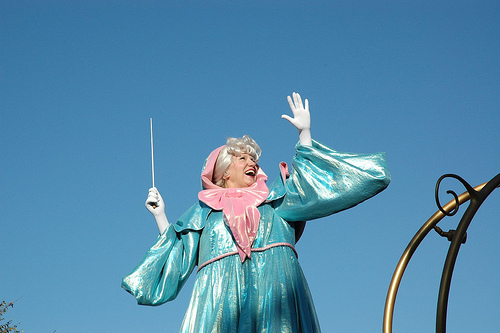
If you follow me on Twitter, you've probably recently become kind of disgusted with the relentlessly cheerful tweets. I generally pride myself on being what I describe as "lovingly sarcastic," and I get kind of awkward when genuine sentiment and sincerity are involved. But I'm having a bit of an absurdly good run at the moment, and the genuineness is leaking out around the sarcastic edges. (Is there sarcasm caulk? I should look into that.) So I figured I might as well completely abandon the sardonic front and tell you all the story of how I found myself as the Community Liaison for the Office of Letters and Light. It's kind of a long story, but it's also one that rather tidily embodies the philosophy of OLL.
In 2002, when I discovered NaNoWriMo, I'd only been writing again for a year and a half or so. It was my last year of university, and I had taken a couple of creative nonfiction classes, but I figured I wasn't much for fiction. Still, I got swept up in the idea, convinced several friends to sign up with me, and went for it. My novel sucked that year, but I was hooked. In 2003, I signed up to be the Municipal Liaison for Edmonton. I got increasingly involved and invested in NaNoWriMo over the next several years, and the community in Edmonton began to grow exponentially.
In 2008, my awesome co-ML (and friend) Karen and I decided we were going to go to the Night of Writing Dangerously in San Francisco. Thanks to a yarn raffle and an enthusiastic community of knitters, I managed to end up the second-place fundraiser. (The first-place fundraiser? Tupelo Hassman. I'm not saying that rocking the Write-a-thon fundraising guarantees you a job at OLL, but it obviously can't hurt. Come to the Write-a-thon! We have cookies!)
Somehow, Karen and I managed to persuade Chris Baty to let us buy him dinner while we were in town. I'm still not quite sure how we talked him into spending several hours with two random Canadians on the busiest weekend of the year, but I am not exaggerating when I say that dinner changed my life. The problem with spending much time with Chris is he somehow manages to convince you that you could fly if you just put your mind to it. I got home from that trip and decided I needed to do something more with my life. I needed a big, fun, scary adventure. Hadn't I learned what I could do if I just put my mind to it? So the following September, I took a leave of absence from my job, and I went back to school.
It was hard going back to the classroom at almost-30, but I managed. That November, I flew back down to San Francisco to help with the Write-a-thon, and spent a bunch more time in the office. But four days wasn't enough, so when I got home, I started making plans for my next adventure. The things I was learning in school were a perfect fit for the work they were doing in the office, and there was a two-month practicum component to my program. Spending two months in the States wouldn't be easy (or cheap!), but it was definitely big, fun, and scary.
The two and a half months I spent living in Berkeley were probably the best of my entire life. They were living proof of what I could do if I just set my mind to something and did it. Leaving nearly killed me, but I knew I'd be back; midway through my internship, we'd worked out a way for me to do part-time contract work from home. For the last year, I've been juggling half-time OLL work and half-time at the library. It was a great compromise, but it was sometimes challenging to balance the two. And then Nancy got an amazing fellowship, and after a whole lot of paperwork and phone calls, we found a way for me to work full-time remotely from Canada. And here I am.
The point I am trying (and possibly failing) to make is: dreams do come true. But they don't come true when a fairy godmother shows up. They come true when you set your mind to do something, bust your ass at it for a long time, make sacrifices, take scary leaps, and do it. Sure, it would be nice if there was a fairy godmother involved. But it's a lot more satisfying when you make it happen yourself.
You're probably here reading this because you decided to try to do something a lot of people thought was crazy: write a novel or a script in a month. And maybe you didn't actually reach your goal. But the point is: you tried. What would happen if you took that leap somewhere else in your life? What have you not been doing because it seems too crazy, or too hard, or too scary?
I'm sitting here at my desk doing my dream job because I took that leap. It didn't happen all at once. Dreams rarely do. All you have to figure out right now is the first step.
– Sarah
Photo by Flickr user mattwitmer
July 6, 2011
Books on Film
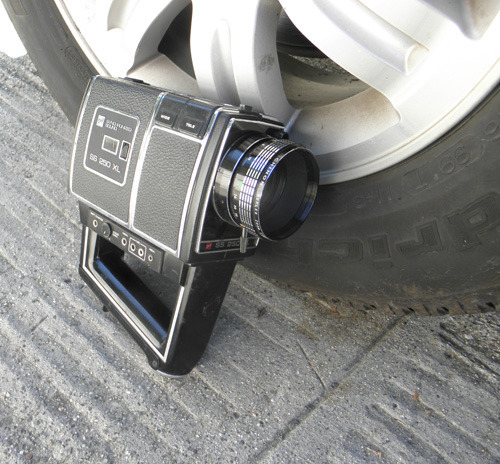
The Pub Crawl continues! Since last sharing about the adventures of my novel, girlchild, I've found and hired a fantastic illustrator, my author website is almost completed, I'm learning about this thing called Facebook, awaiting the dreaded blue pen of copy edits, and I've got book tour on the brain! Having spent much of my colorful youth—probably too much—with independent bands at home and on the road, it's second nature to me to follow the indie-band model of self-promotion and touring.
Using Martin Atkin's Tour:Smart and Break the Band as my bible, the plan thus far largely involves taking couch-surfing to new heights on a tour route that spirals like a conch shell, relying on loved ones and new friends along the way. Plus, like any good indie tour does, I'll have merch, and a cute boy to man the merch table. But wait, there's more: I'm going to film it. All of it. I'm going to make a bookumentary.
This is the riskiest idea I've ever had, which is saying something, and the most expensive. But I've never been comfortable orphaning an idea, especially one wearing as daring a dress as this. So, I'll be gathering cameras and people (and funds with which to gather cameras and people) to travel with me and record girlchild's readings, the empty seats and full (I typed that with fingers crossed), along with as many other writers' readings as I can capture along my route for Hardbound: A Novel's Life on the Road.
Basically the love-child of The Comedians of Comedy, Les Savy Fav's Let's Stay Friends tour, and the Mothers of Invention's 200 Motels, with a sprinkling of magic dust from the fairy godmother of tour documentaries, Madonna: Truth or Dare, Hardbound's main goal is to capture those elusive creatures we are (and want), readers, and tag them before throwing them back out into the wild.
Documentaries and films exist about writers, our work, and even about book tours for books that have distinct messages, but I can't find one that explores the basics of the age-old story: Reader Meets Book; Reader Hears Book; Reader Buys, Borrows, or Steals Book (add alternate endings here). What happens at that first meeting? How is this essential relationship forged, whether it fails or flies, and why? Why hasn't this been captured before? Is the question too mundane for film? I can't believe that. I refuse to believe that books, despite the fetish items they are fast becoming in the digital age, these creations that mean so much to you and me—the very reasons you're reading this and I'm in this chair writing it—I can't believe that beautiful, life-saving, horrible, fantastical books aren't worthy of film's exploration.
Do you know what I mean?
A book tour is a long and potentially lonely birth. What happens inside of it? Who shows up? And why? What gets you in a seat at a reading? Why do you crack a new book's spine, toss it out the window or cherish it, and then crack another? Is the connection between a single work and a single reader too alchemical to capture on film? Am I succumbing to the lure of alchemy? Have I lost my mind?!
Would you film your book tour? What would you try to capture in those frames? Would you go see a film about a book tour? What's the craziest idea you've ever had? Are you chasing it down? Share it now, because saying it aloud is part of what makes it real. I'll be the last one to say you can't turn that lead into gold!
– Tupelo
July 1, 2011
Where do you jot your ideas?
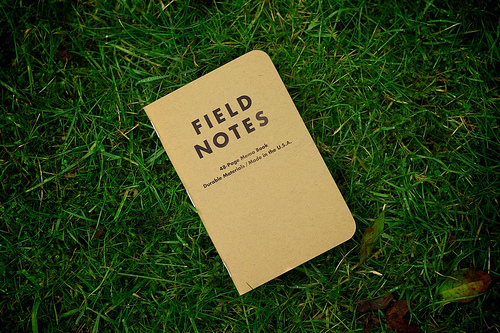
I've been trying to get into more of a creative routine lately. I started coming into work earlier, so I could get a little more evening productivity, and I've found a good coffee shop spot whose feng shui seems to work for me. (There's a plant directly behind me. I'm sure that's it.) But the most beneficial step has been something that seems very obvious: actually writing down my ideas.
Before, stuff just rattled in my brain and was easily forgotten; I didn't have a great method like Max's to tame my brainstorms. Now, I've become a jotter. Even vague thought fragments get written down, in hopes that I'll be able to use them in a story or essay later. "Too intimidated to go into specialty denim store," for instance, isn't much of a concept yet, but I'm glad I have it just in case.
The venue for my jots has been a Google Doc titled "Ideas,"
where everything
is simply
bullet-pointed.
I also just opened up a new pack of Field Notes books, for when I'm not near the computer. (Don't these look perfect for planning your Camp NaNoWriMo novel?)
Tell us about where you put your ideas. What's the name of your computer file for brainstorming? Is there a notebook brand you like? Do you exclusively use Burger King napkins? Share your favorite jotting methods with your fellow writers!
– Chris A.
Photo by Flickr user Michael Dales
Chris Baty's Blog
- Chris Baty's profile
- 63 followers



